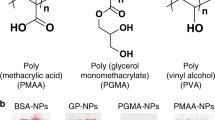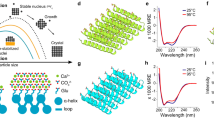Abstract
Bernal1, and subsequently other authors2, have suggested that the prebiotic synthesis of the precursors of biopolymers could have occurred on a solid surface such as that provided by clay or some other mineral. The separation of products from the other components of the reaction mixture in such a system is reminiscent of modern solid-phase synthesis of polypeptides and polynucleotides. One such scheme envisages that growing polymers were localized by adsorption to a mineral surface where an activating agent or activated monomers were supplied continuously or cyclically3,4. We have been trying to test this scheme using reactions which we believe may be related to those that occurred during prebiotic evolution. We have already reported that oligonucleotides adsorbed onto hydroxylapatite provide suitable templates for the oligomerization of (guanosine 5′-phosphor)-2-methylimidazolide (2-MeImpG)4–7. However, this is not a suitable test reaction, as 2-MeImpG oligomerization proceeds almost to completion in a single step. Here we report that a sequence of reactions in which initially formed oligo(G)s are reactivated by conversion to phosphorimidazolides in the presence of poly(C) and then allowed to ligate is ideal, in that repeated cycles can be carried out on the surface of hydroxylapatite, whereas in the liquid phase the cycle could be achieved only with considerable difficulty.
This is a preview of subscription content, access via your institution
Access options
Subscribe to this journal
Receive 51 print issues and online access
$199.00 per year
only $3.90 per issue
Buy this article
- Purchase on Springer Link
- Instant access to full article PDF
Prices may be subject to local taxes which are calculated during checkout
Similar content being viewed by others
References
Bernal, J. D. The Physical Basis of Life (Routledge & Kegan Paul, London, 1951).
Chang, S., Des Marias, D., Mack, R., Miller, S. L. & Strathearn, G. in Earth's Earliest Biosphere: Its Origin and Early Evolution (ed. Schopf, J. W.) 53–92 (Princeton University Press, New Jersey, 1983).
Gibbs, D., Lohrmann, R. & Orgel, L. E. J. molec. Evol. 15, 347–354 (1980).
Schwartz, A. W. & Orgel, L. E. J. molec. Evol. 21, 299–300 (1985).
Bernardi, G. Meth. Enzym. 21, 95–139 (1971).
Martinson, H. G. Biochemistry 12, 2737–2746 (1973).
Joyce, G. F., Inoue, T. & Orgel, L. E. J. molec. Biol. 176, 379–306 (1984).
Rhodes, D. & Klug, A. Nature 286, 573–578 (1980).
Author information
Authors and Affiliations
Rights and permissions
About this article
Cite this article
Acevedo, O., Orgel, L. Template-directed oligonucleotide ligation on hydroxylapatite. Nature 321, 790–792 (1986). https://doi.org/10.1038/321790a0
Received:
Accepted:
Issue Date:
DOI: https://doi.org/10.1038/321790a0
This article is cited by
-
Biological interactions at metal surfaces
JOM (2011)
-
Polymer Gard: Computer Simulation of Covalent Bond Formation in Reproducing Molecular Assemblies
Origins of Life and Evolution of Biospheres (2005)
-
Synthesis of long prebiotic oligomers on mineral surfaces
Nature (1996)
-
Adsorption of 5′-AMP and catalytic synthesis of 5′-ADP onto phosphate surfaces: Correlation to solid matrix structures
Origins of life and evolution of the biosphere (1995)
-
Template-directed chemistry and the origins of the RNA world
Origins of life and evolution of the biosphere (1994)
Comments
By submitting a comment you agree to abide by our Terms and Community Guidelines. If you find something abusive or that does not comply with our terms or guidelines please flag it as inappropriate.



